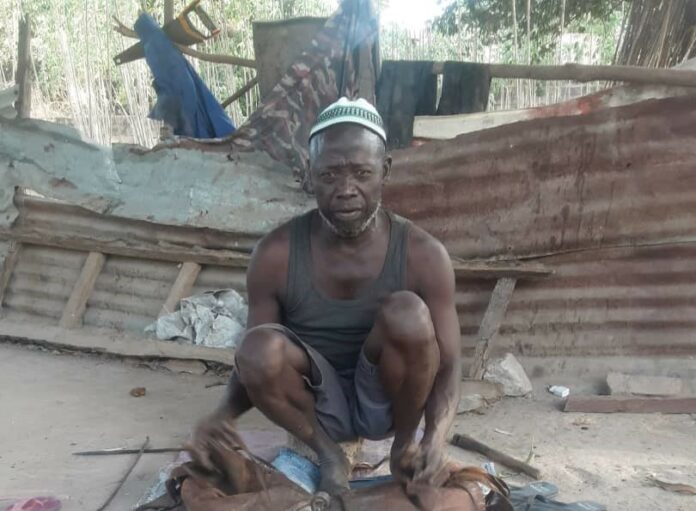By: Alieu Jallow
Koinigi Sorr is a local blacksmith who migrated from Kiang to Kombo Brikama in search of greener pastures. As a blacksmith who inherited the trade from his ancestors, Koinigi now finds himself battling with modern-day technology while struggling to feed his family of 16 through his locally made hand brail.
In the modern era, blacksmithing has undergone significant changes, particularly with the advent of the Industrial Revolution. The development of new technologies and mass production of goods has decreased the demand for blacksmiths. However, the trade has not disappeared completely, and many blacksmiths continue to practice their craft today. Koinigi told The Fatu Network that he has lived on the trade since his childhood, and it now serves as his only source of income, feeding over 16 members of his family.
“Here is where I feed my family, but the advent of new technologies has greatly affected my trade. In those days, I used to make big farming tools, but it is not the same now as the cost of iron is high. Secondly, you can’t work without tools. To work this traditional hand brail, you need an extra hand, but with the modern hand brail, one person can do the work alone,” Koinigi explained.
In the traditional Mandinka setting, smiths known as “Numoo” play a crucial role as they make farming tools and war tools. The Mandinkas were heavily reliant on farming and conquest in the 18th century, but today the trend is changing as most farming tools are mechanized, leaving Koinigi with little business.
The adept smith, who uses tanned goat skin brail to work, said he wants to revive and maintain the traditional smith work, but his inability to afford modern-day hand brail is restricting his productivity. He seeks support to be able to earn more as the family demand increases each day.
“If I can get support with a modern-day hand brail, I will be happy. Any help will boost my productivity, allowing me to make big farming tools and support my growing family,” he appealed.
What truly sets African ironworks apart from those in other parts of the world are the forms that blacksmiths fashioned from these blooms. Their expertly crafted iron ploughs, sickles, and hoes were essential for the development of agriculture across Africa. These tailored-made tools were designed to meet the continent’s varied climate, terrain, soil types, and crops, yielding a wide diversity of tailored-made tools. However, the trade is virtually dying with time as technologies take center stage.




